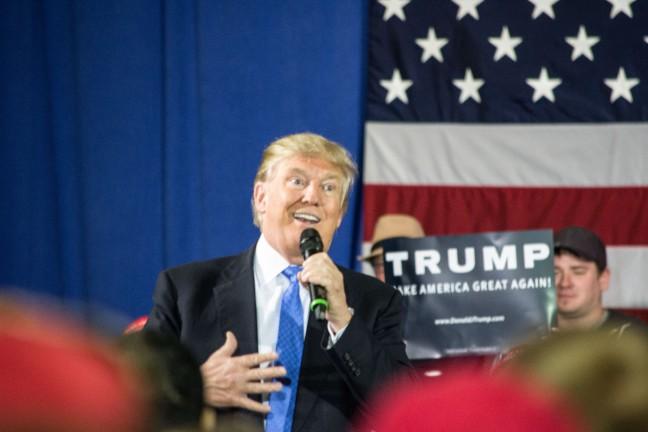In 2016, many media outlets “didn’t think Trump would win” because he “was a joke.”
This is the sentiment University of Wisconsin journalism professors Christopher Wells and Young Mie Kim found through their research on media and digital advertising’s role in determining the outcome in the 2016 presidential election.
The Wisconsin Union Directorate welcomed Wells and Kim Monday to discuss their research on the historic election.
Political campaigns target every voter in the U.S., Kim said. Using information like voter registration, census data, public records, consumer marketing information and online behavior, campaigns create individual profiles that capture basic information and an individual’s interests.
From there, political campaigns can create interest-based ads that directly target individuals.
“Social media … is not an exception,” Kim said. “This is fully customized based on [an individual’s] profile, networks and things [the individual] has liked before.”
The target profile for political campaigns is a white, middle-aged male who has a bachelor’s degree and is highly interested in politics, Kim said. Since these people have socially constructed power, they have the most influence.
These people are targeted because they are “strategically important” to campaigns because those who are politically-interested are more likely to turn out to vote.
Kim said minorities and low-income individuals were more likely to be targeted by campaigns highlighting negative features of the opposing candidate.
“What this means is that [minorities and low-income individuals] see the hatred between the candidate groups,” Kim said.
Solely seeing hatred between two candidates in the 2016 election drove the less-targeted individuals to vote for the candidate they hated less.
The news coverage of President Donald Trump contributed to his win in the 2016 election, Wells said. This was mainly due to “horse race coverage,” which occurs when the media focuses their attention on who is winning in the polls.
Trump didn’t buy a lot of media, but he used public relations strategically, Wells said. By using information subsidies — ways of providing free information to the press — the media covered Trump more easily.
“[Trump] innovated this form of [information subsidies] in which he called [media outlets] in advance or the show would be going on and he would be sitting in his bedroom, call up CNN and say ‘I have something to say,’ and they would put him on the air,” Wells said.
During the primaries, no publicity was bad publicity for Trump. This, Wells said, is because Trump “was an untraditional candidate.” In the months leading up to the election, news outlets covered Trump gaining traction in the polls.
The coverage was not a partisan issue, Wells said. Conservative press praised Trump as much as liberal press hated on Trump. These trends can be attributed to ratings.
“The news media realized early on [in the primaries] that Trump was a ratings bonanza,” Wells said. “It was a strange coincidence in which the news media realized this early on … and [Trump] dominated the press in both the primary and the general election.”


